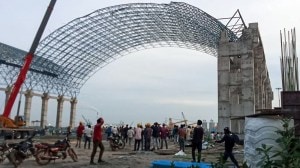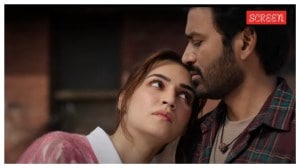Namboodiri, the artist whose lines traced an arc of history, is no more
He had uncanny recall. You only had to ask and he would sketch anyone he knew from the past, with no reference, purely from a well-archived memory. He would rewind to the 1960s, 70s or 80s to produce portraits of individuals or groups with precise vintage.
 Artist Namboodiri
(1925 - 2023)
Artist Namboodiri
(1925 - 2023)Few illustrators would have created art history like Karuvattu Vasudevan Namboodiri, 97, who passed away on July 6. When back in the 1960s he began his career in Mathrubhumi Weekly, he signed his illustrations for short stories, serialised novels and poems as NAMBOODIRI . That is how the journal’s committed readership came to know him. By the time he left the publication in the 1980s he had outgrown the job role as an accompanying artist. He was one in his own right. Kerala has since known him as Artist Namboodiri.
In Namboodiri’s days, Mathrubhumi Weekly pretty much defined mainstream Malayalam in prose and poetry, fiction and non-fiction. It was to Kerala what Desh was to Bengal. These two states in two corners of the subcontinent seemed to radicalise in tandem — left politics, pathbreaking literature, new cinema.
Between the two, Kerala had a bigger appetite for creative chaos. As though domestically sourced turbulence wasn’t enough, Mathrubhumi Weekly outsourced from Bengal. A serialised Bengali novel was a permanent fixture. In about a year from the release of Pather Panchali the weekly carried a review by a Malayali in Kolkata who knew Bengali well enough to watch the film without subtitles and write.
This eclectic editorial content often extended to fiction from other Indian languages. There were challenges here for the visual artist. Sitting in the south western coast, how do you grasp a vast nation-wide range of facial and gestural characteristics? Movies must have helped. And once to visualise some tale on the Chambal valley, Namboodiri modelled the characters on footballers from Madhya Pradesh who had come to his soccer-crazy town of Kozhikode for the Sait Nagjiee Trophy tournament.
No patch on a mahanagar like Kolkata, this smaller port town from where Mathrubhumi was published was no less buzzing. G Aravindan, cartoonist then and filmmaker later, hosted a little adda from his rented room in the Paragon Hotel in the centre of town. The regulars here went on to reshape Cultural Kerala — writers, artists, singers, filmmakers, broadcasters, theatre enthusiasts. The best visual chronicling of this fraternity was later done by Namboodiri.
He had uncanny recall. You only had to ask and he would sketch anyone he knew from the past, with no reference, purely from a well-archived memory. He would rewind to the 1960s, 70s or 80s to produce portraits of individuals or groups with precise vintage. Even more incredibly, he could do the same with places. He could, for instance, bring back to life an old familiar nondescript corner shop or a cart track that fell off the map a long time ago. No wonder Aravindan assigned him to do art direction in many of his films. With him around, you couldn’t go wrong with your period markers and props.
What endeared Namboodiri to readers was his core work as an illustrator. Back then, when he started out, editors to advertisers everywhere preferred line art to photographs. There was no Photoshop then to tweak images. You needed trained artists to conjure up visual content. Mathrubhumi had commissioned a formidable array of accomplished artists to illustrate, beginning with the legendary K C S Panicker, followed by M V Devan, A S Nair and Namboodiri. The three became household names thanks to the stature of the publication. Interestingly, art itself was not promoted half as well as literature in Kerala then. It came as part of your read. Biennale took ages to arrive. What saved the day was that the readers who turned the pages looked at the drawing as well. And slowly, the lines grew on them.
Those were the years when Malayalam literature was modernising and literacy was beginning to boom. Television hadn’t come and cinema was the only distraction. Even the best of films were adaptations of novels and short stories. For a visual artist then, the world of words was the safest place to be in. On the flip side, it could be annoyingly limiting, especially for someone like Namboodiri who studied art formally in the Madras School of Arts and loved his occasional sculpting on copper.
Namboodiri transcended the trap with a certain lightness of touch. When he had to visualise Randamoozham, M T Vasudevan Nair’s Jnanpith winning novel based on the Mahabharata, he could have created an array of larger-than-life characters. He did nothing of the kind. He didn’t eclipse the text but created a parallel visual narrative. He would always tell you that he practised his art as a musician practises music, “ Leave the lyrics alone and stay in tune”.







